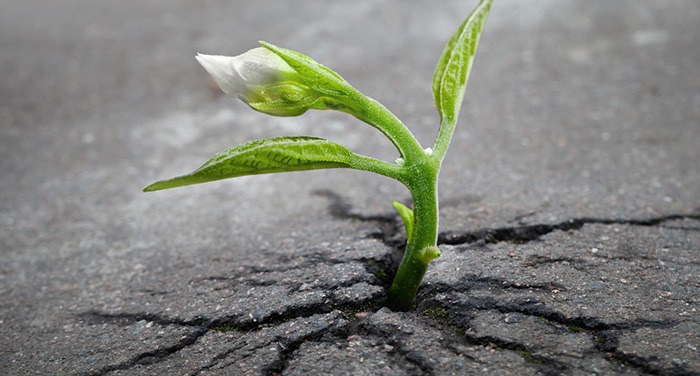Post- Traumatic Growth

Focusing on strengths instead of weaknesses is a basic tenant of recovery, however for people who have experienced trauma this can be very difficult and part of what is wounded in the trauma. There is a tendency to see themselves as inherently weak due to their experiences. Beginning to see yourself from a strengths-based perspective is part of the process toward healing. Shifting your view of trauma as an injury shifts the perspective/belief away from “sickness” to “impact” and moves the conversation away from “what is wrong with you” to “what has happened to you”.
It is also important to have the awareness that people who have experienced trauma can go on to not only “survive” the trauma but also experience what has been identified in the literature as “Post Traumatic Growth”. Understanding that this is possible is an important element that contributes to fostering hope.
The research suggests that between 30-70% of individuals who experienced trauma also report positive change and growth coming out of the traumatic experience (Joseph and Butler, 2010). Post traumatic growth is defined as the “experience of individuals whose development, at least in some areas has surpassed what was present before the struggle with crises occurred. The individual has not only survived, but has experienced changes that are viewed as important, and that go beyond the status quo” (Tedeschi and Calhoun, 2004). Individuals have described profound changes in their view of “relationships, how they view themselves and their philosophy of life (Joseph and Linley, 2006).
What is essential to keep in mind is that post traumatic growth is not a direct result of trauma but rather related to how the individual struggles as a result of the trauma (Tedeschi and Calhoun, 2004). There are a number of things that people who have experienced trauma and subsequent growth identify that was significant to their struggle. These include: having relationships where they felt “nurtured, liberated or validated” in addition to experiencing “genuine acceptance from others” (Woodward and Joseph, 2003). The ability to connect with people who are able to provide this level of assistance and support through active, attentive and compassionate listening can lead to not only to recovery but can foster post traumatic growth. This may include a therapist, close friend, family member, spiritual leader and/or mentor.
It is important not to minimize the impact of the trauma in an effort to promote post traumatic growth. This is not always the outcome for individuals who have experienced trauma and it’s important not to imply any failure or minimize the impact of the trauma. It is also important to be aware that even in the presence and development of post traumatic growth it doesn’t mean that there is an absence of distress. Both can occur simultaneously. Post traumatic growth can be considered an outcome as well as a process. It is about maintaining a sense of hope that not only can a person who has experienced trauma survive but they can also experience positive life changes as a result. Keeping in mind it is not the event that defines post traumatic growth but what is able to develop from within the person and service providers can play a significant role in this process.
Next: Mental Health >


